The very first Hobnail type pattern votive candleholders that were produced in the United States are most likely examples that are marked “PAT. JULY 11, 1939” on the bottom.
The “PAT. JULY 11, 1939” marked glass votive “candle cups” were made by Crescent Glass Company, Wellsburg, West Virginia (1908- c.1983), re-named Brooke Glass Company (1983-c. 2000).
This particular patent date marking appears to indicate the very first production of this type of candle holder, and refers to the design patent (#115,659) which was awarded to Henry Rithner, Jr, owner/manager of the Crescent Glass Company of Wellsburg. (A search of Google Patents, searching with the patent number 115659 will bring up information on the original design drawing and specs.)
The patent rights lasted for 14 years, so any of the candle holders which bear this patent marking I would assume date between 1939 and 1953. Crescent Glass Company reportedly made large quantities of ruby red glass for automobile taillights, bar glass candle holders, lenses and similar items. I’ve seen this particular marked candle tumbler in a shade of red (shown in pic) and clear glass, but it is likely other colors were produced.
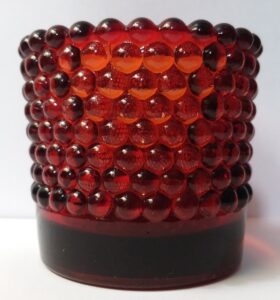
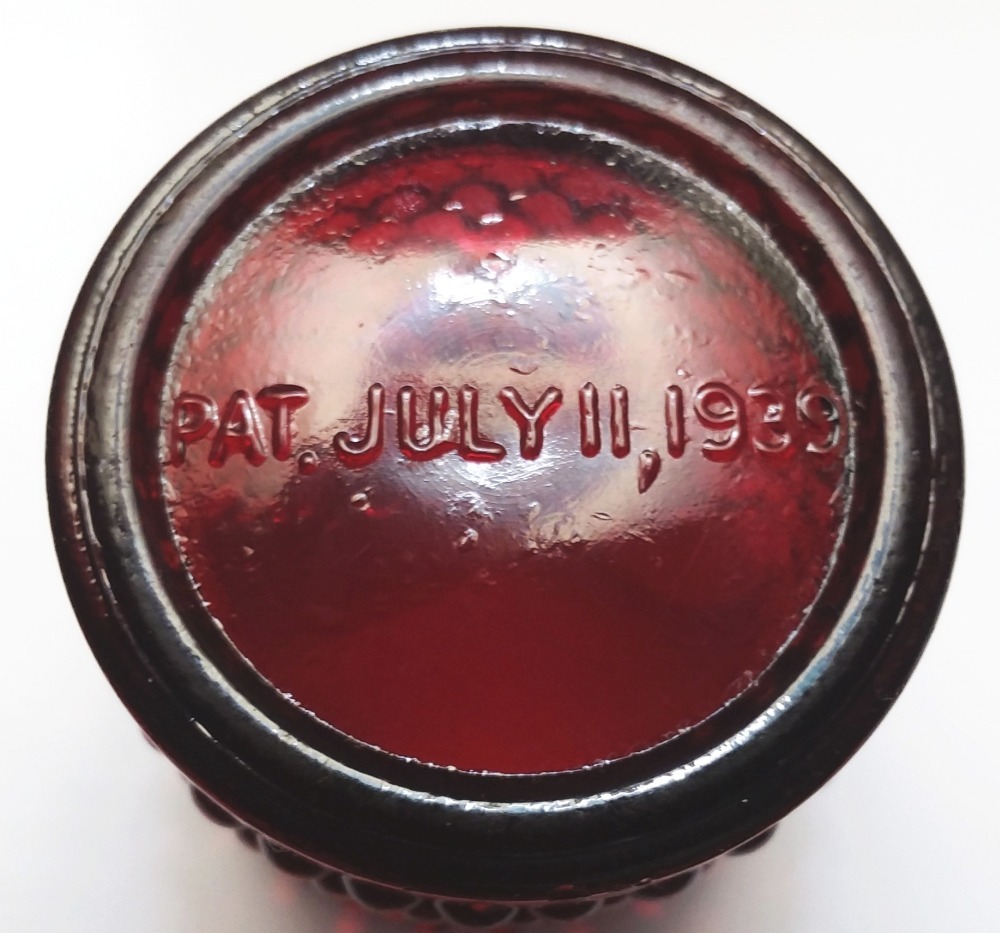
The great majority of the “hobnail” design votive candleholders, called “vigil candle tumblers” in the original patent design records, are unmarked with a smooth base or have embossings such as “Made in Hong Kong” or “Made in Taiwan“, often with a pattern of concentric rings, on the bottom.
These cups are often used as tealight holders, either singly or in groups, for decorative purposes. The examples made in red, green and white milk glass in particular, are often used in Christmas and other holiday season home decoration.
They are also frequently used as toothpick holders, and the distinction between these types of small candle holders and “true” toothpick holders is often blurred. These types of votive candle holders are sometimes sought and acquired by collectors of glass toothpick holders.
ADVERTISEMENT
(Note: this article concerns the “flat base” type of hobnail cup, not the stemmed type used in great numbers for wall sconces and candelabras, although the information may apply to both types. The flat base cups seem to be less common that the stemmed type). No doubt many glass companies manufactured both types.
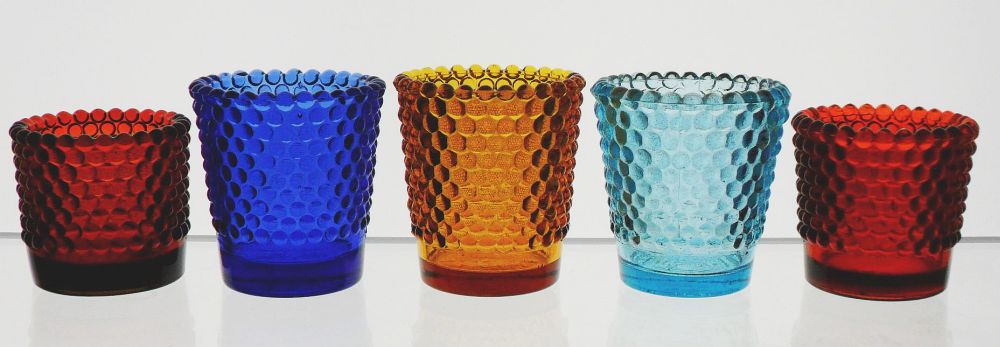
These votive candleholders are found in a very wide array of colors, and have evidently been produced in large quantities since 1939 up until the present day. Shades of red, light green, emerald green, cobalt blue, light blue, white milk glass, clear, frosted clear, amber, purple, and other colors are seen. Purple seems to be one of the more uncommon colors seen (see photo below). No doubt many unidentified glass makers in Hong Kong, Taiwan, (and probably Japan and China) have made these hobnail votive cups over the years. The amber example shown in the photo above is marked “MADE IN U.S.A.” on the base, but the maker in that case is currently unidentified. Some possibilities include Brooke Glass Company, Indiana Glass Company, and Anchor Hocking Corporation.
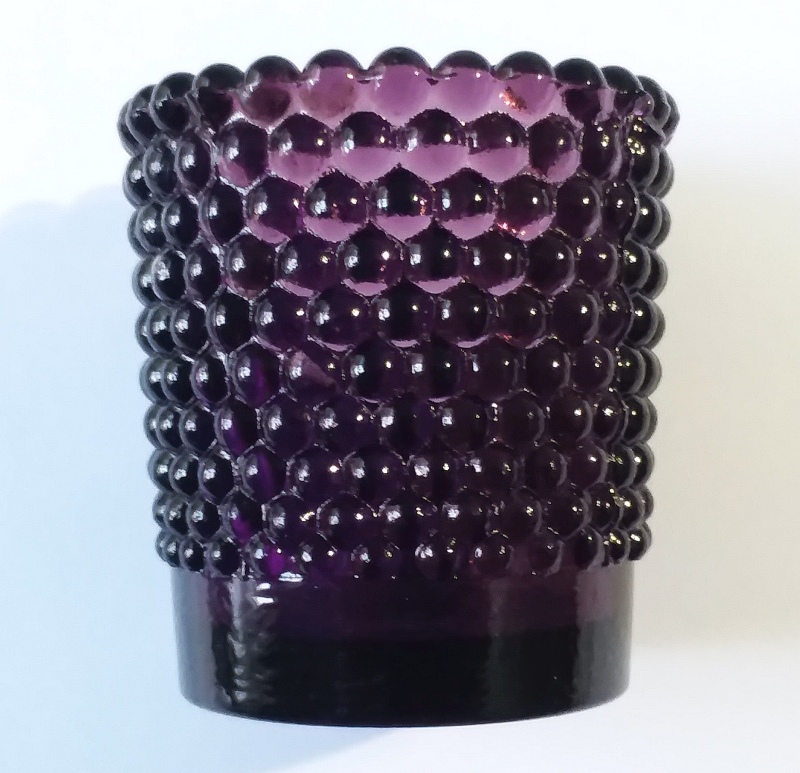

Their high point in popularity seems to have been the 1960s and 1970s, but they are still being made even today (2020s). Some of the more recent examples from the US were produced by Indiana Glass Company, of Dunkirk, Indiana, although Indiana closed in 2002. Clear examples are found marked with the “Anchor inside a rectangle” mark used by Anchor Hocking Glass Corporation.
Modern versions of these cups have been offered recently by such retail outlets as World Market, and are also available online. Presumably most of the newest types are being made in Asia, primarily in China and India. Some have been found that were made in Mexico (see photo below).
Note: most of the more recently-made Hobnail-type votive cups appear somewhat “cheaper” looking and are often made of clear glass with a surface flashing or coating applied, so the apparent color of the glass is not the actual color of the glass itself. Some of the more recently-made examples also seem to be lighter in weight, and the “hobs” are often a bit “weaker” or “flatter”- not quite as boldly executed.
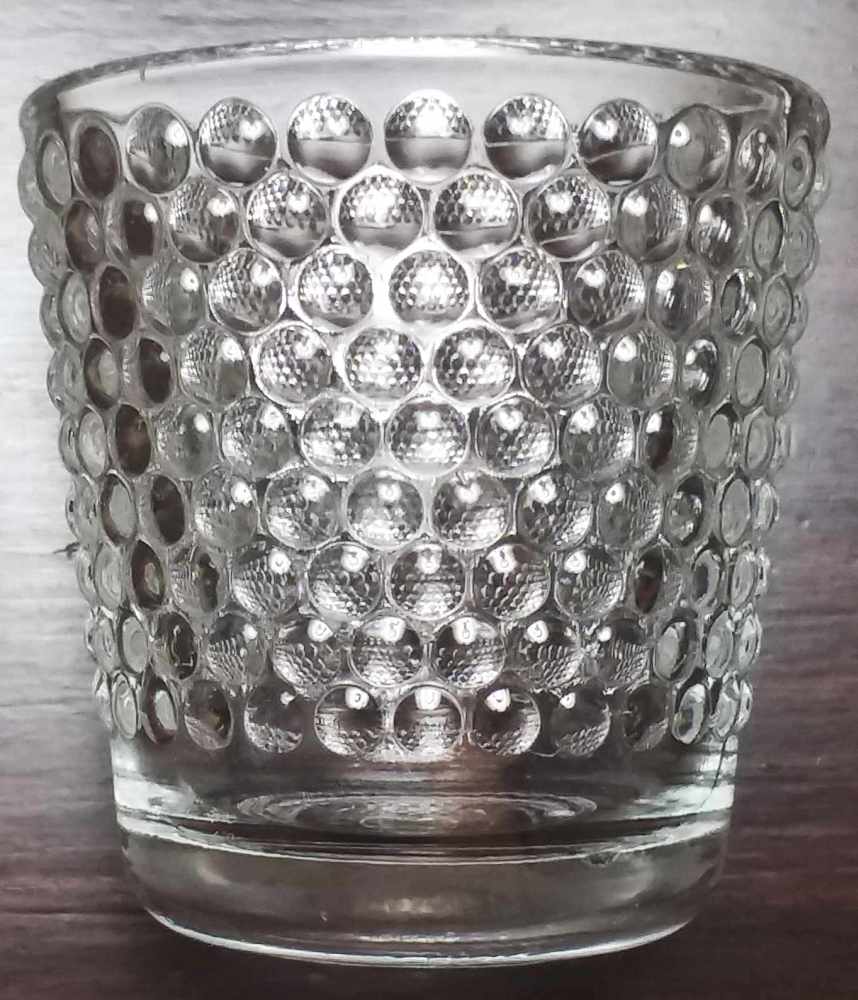
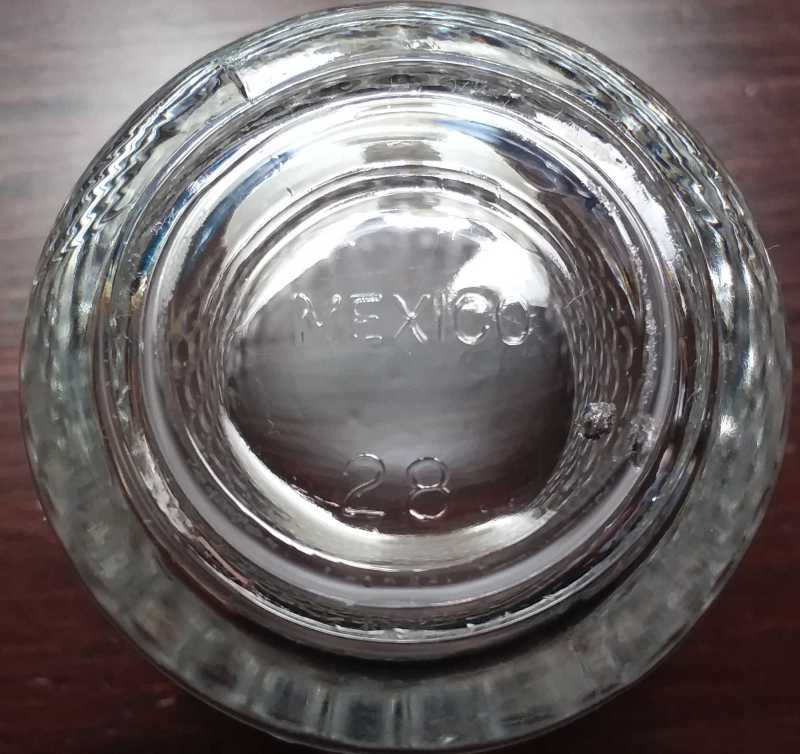
Shown above is a relatively recent clear glass votive candleholder made in Mexico. The base is marked “MEXICO” along with the mold number 28. The maker is probably either Vitro or Libbey Glass. The Crisa brand name was acquired from Vitro by Libbey in 2006. Similar votives have been confirmed as having been sold by Vitro under the catalog / stock number 6802 (judging from the markings seen on the side of an original cardboard packing case). One characteristic of these more modern type votives (at least in this case) is that the upper rim is smooth and entirely horizontal. Older examples usually have a “scalloped” or undulating upper rim because of the placement of the very top row of hobnails.
If you have other detailed information about older Hobnail type votive candleholders, or about Crescent/ Brooke Glass Company, please contact me! (From info on this page, link below, it appears that Brooke Glass Company was officially dissolved in November of 2016, although I have been told that the glass factory actually shut down production and an auction sale was held in the year 2000) – https://opencorporates.com/companies/us_wv/3663
Also, I’m interested in learning the identities of any other glass companies in North America, Asia or elsewhere that have made these types of candle holders at one time or another. Any information would be appreciated, with proper credit given to the contributor.
ADVERTISEMENT

